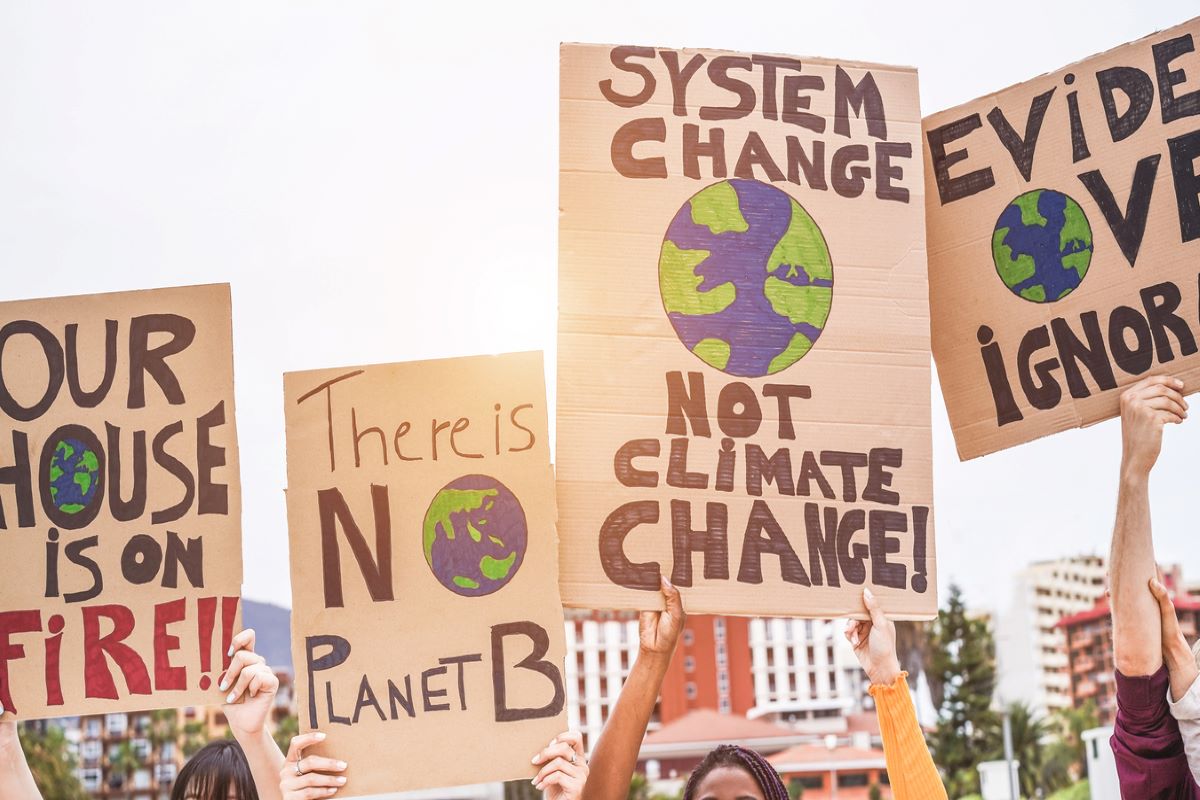Even as the ongoing Climate Summit at Glasgow (COP26) is trying to sort out ongoing debates on what is being increasingly described as the biggest challenge confronting humanity, there is increasing evidence that past efforts have not succeeded in keeping temperature rise to below 2 degree C and closer to 1.5 degree C.
Where is the missing link? Will this missing link get adequate attention at COP26? The missing link here refers to the failure to involve and mobilize small farmers and workers adequately. Of course, there is widespread agreement that they will be impacted most severely by climate change. So why have they not been adequately informed and mobilized?
Advertisement
A common belief is that the issue of climate change is too scientific and technical to be taken to peasants and workers. But this belief is not justified as people certainly understand the issue when it is contextualized properly with their reality, as I observed in the context of holding workshops on this issue in remote villages.
Small farmers are most capable of the kind of caring cultivation that is needed for climate change mitigation. Big companies cannot do this kind of cultivation with their heavily mechanized work based on polluting, hazardous inputs and centralised decisions. Basically, the cultivation that is needed is of a kind which will conserve soil and water and increase the organic content of soil. For this it is also very important to protect or regenerate earthworms and micro- organisms in soil which can contribute all the time by their natural actions to increasing organic content of soil.
The mixed cropping systems, arranging organic manure and composting, the careful tending of soil – all this is best achieved by small farmers. Soil with an increasing organic content can absorb high amounts of carbon dioxide, while by avoiding chemical fertilizers very damaging pollution by nitrous oxide (a much more damaging greenhouse gas compared to carbon dioxide) is
avoided. To regenerate degraded forests, landless workers in particular can make a very important contribution.
While in several places, forests will regenerate once the degraded area is protected for some time, wherever afforestation work is needed, this must also be based on indigenous species known for their contribution to social and water conservation, for fodder and fruits and other nutritious edibles, trying to mimic local natural forests. This is just the kind of work that can creatively combine mitigation as well as adaptation.
The regenerated forests and pastures contribute to greater absorption of greenhouse gases, and at the same time increase prospects of sustainable, self-reliant livelihoods, increasing resilience of communities in difficult times of climate change. Organizations of small workers and landless workers should be increasingly involved in these issues.
Many urban workers such as construction workers, quarry workers and others working in the open will have to face much higher heat stress as climate change advances. Domestic workers and homeless persons, including migrant workers coming for shorter durations, will also face problems of increased heat stress. In industries involving thermal stress, this is an acute problem even in normal times; this will increase with climate change. Remedial actions can be found best by engaging workers in these issues closely. While they can be most effective in suggesting adaptation measures, sometimes they can also come up with suggestions for mitigation aspects as well.
Organizations of these workers should be involved in efforts to take timely steps. However, budgets are needed to step up all these efforts. Domestic availability of funds for all these activities has been very limited compared to the needs in most countries of the Global South including India. While efforts to increase domestic funding should be made, the realistic situation on the basis of trends indicates only limited possibilities and this will not be adequate keeping in view the more urgent need to tackle climate change challenges. This is why a lot of hope was reposed by Global South countries in the international climate fund.
Unfortunately, the Climate Fund has lagged behind in fulfilling its target of annual contribution of $100 billion. In addition, the target of $100 billion has itself been found to be too inadequate keeping in view the enormity of challenges. Some idea of this inadequacy can be obtained from comparison with some other statistics. The total wealth of the world’s billionaires is US $13,000 billion in 2021, according to Forbes listing of billionaires.
The net worth of four billionaires is well over $100 billion each – Jeff Bezos at $177 billion, Elon Musk at $151 billion, Bernard Arnault at $150 billion and Bill Gates at $124 billion. The wealth of the world’s billionaires increased from $8000 billion to $13000 billion dollars in just one year from 2020 to 2021. The total military expenditure of just the USA is $778 billion. The total amount spent on the war on terror following 9/11 during the next 20 or so years was $5800 billion, according to a Brown University analysis, out of which $2300 billion was spent in Afghanistan alone.
The spending on alcoholic beverages in the USA alone in one year is $252 billion. The spending on cigarettes in the USA and the EU in one year is over $210 billion. The total trade in the world in a year is $17000 billion. Total external debt of Africa in one year is $726 billion. Clearly the annual commitment of $100 billion should be increased. Also the main component of this should be linked to those climate change mitigation and adaptation actions which are linked to sustainable livelihoods of workers and peasants. This will help in climate actions emerging in the form of a people’s movement with firm roots.
(The writer is Honorary Convener of Campaign to Save Earth. His recent books include ‘Planet in PerilPeople’s Response the Only Forward’ and ‘Protecting Earth for Children’)











